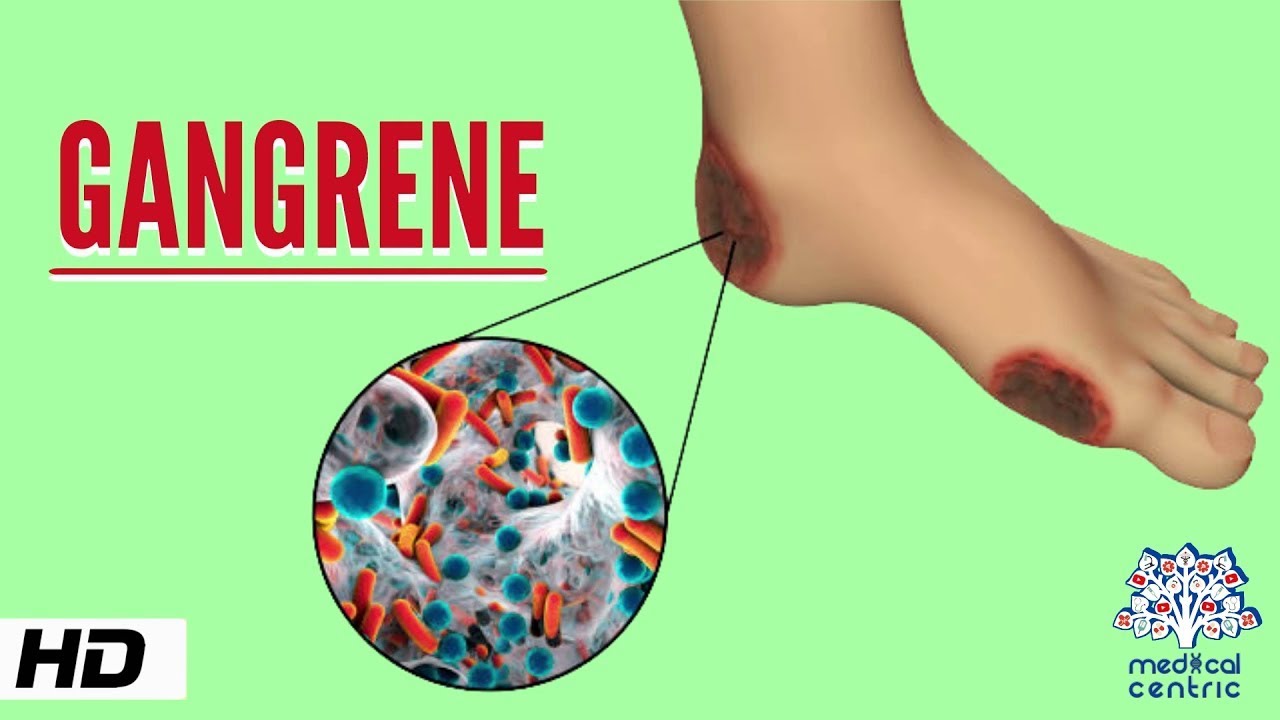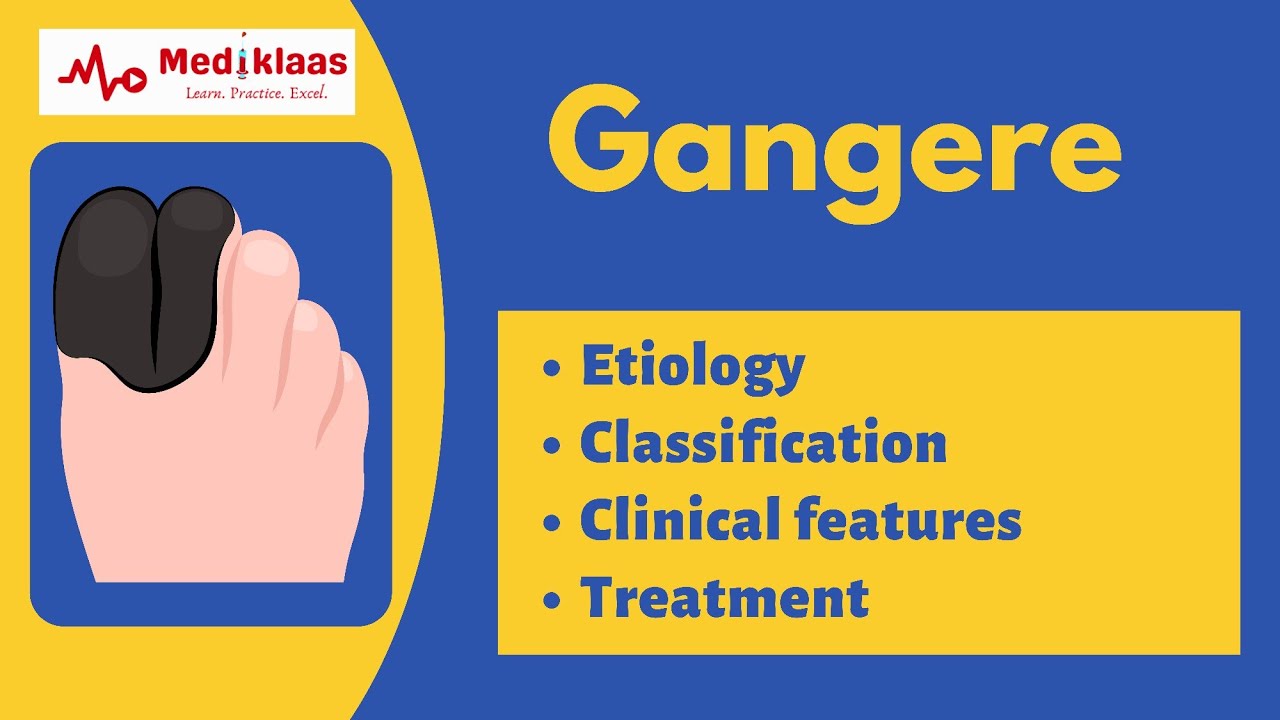Gangrene - Types, Symptoms, And Treatments
Tissue death, or gangrene, occurs when an area of the body does not receive enough oxygen-rich blood, most commonly the extremities. It's a life-threatening illness that can cause limb loss or even death. It requires immediate medical attention in order to prevent further tissue death.
Author:James PierceReviewer:Karan EmeryJan 24, 202316 Shares636 Views

Tissue death, or gangrene, occurs when an area of the body does not receive enough oxygen-rich blood, most commonly the extremities.
It's a life-threatening illness that can cause limb loss or even death. It requires immediate medical attention in order to prevent further tissue death.
Gangrene has been connected to diabetes. If a person develops diabetic neuropathy, often known as "nerve death," they may have an injury, yet fail to recognize its presence.
The tiny arteries are also compromised by diabetes, leading to inadequate blood flow to the extremities. Conditions like Raynaud's syndrome and smoking are also risk factors.
An Overview Of Gangrene
Gangrene is the death of body tissue that can be caused by a lack of blood flow in the affected area or by a severe bacterial infection. Gangrene most frequently affects the limbs, particularly the extremities like the toes and fingers.
It is also possible for it to take place in the body's muscles as well as internal organs like the gallbladder. A condition that can damage the blood vessels and impair blood flow, such as diabetes or stiff arteries (atherosclerosis), increases the risk of gangrene.
Gangrene can also be caused by exposure to toxic chemicals. Antibiotics, oxygen therapy, and surgical procedures to both restore blood flow and remove dead tissue are some of the potential treatments for gangrene. The sooner gangrene is diagnosed and treated, the higher the patient's likelihood of making a full recovery.

Gangrene, Causes, Signs and Symptoms, Diagnosis and Treatment.
Types Of Gangrene
There are two main types of gangrene:
Dry Gangrene
Organs including the liver, heart, and muscles can't do their jobs without oxygen. Your blood carries the oxygen to all of your body's cells.
When an organ or limb stops receiving adequate oxygen, dry gangrene sets in. Deterioration and death of the affected body part are inevitabilities.
Skin closure and the absence of infection are hallmarks of dry gangrene. Arteriosclerosis, the development of fatty compounds on the arterial walls, is the leading cause of dry gangrene.
Wet Gangrene
Wet gangrene is a condition that develops when the tissues of your body become infected with bacteria of some kind. In response to the presence of the bacteria, the tissues respond by becoming more watery and disintegrating.
The tissues in your body will perish as a result of this process. Because the infection could potentially spread to other areas of the body, this condition is considered to be an even greater medical emergency than dry gangrene.
Gas Gangrene
Gas gangrene is mostly brought on by Clostridia, which is a type of bacteria. These bacteria induce an infection, which leads to the formation of gas bubbles and poisons within the affected part of the body.
The gases that are produced result in the demise of tissue. Even though this form of gangrene is extremely uncommon in the United States, it can be lethal.
Each year in the United States, around one thousand persons are diagnosed with gas gangrene. If treatment is not received, there is a one hundred percent probability that it will result in death. According to the findings of some research, the mortality rate can be as low as 5 to 10 percent if the condition is appropriately treated.

Gangrene: Dry, Wet and Gas Gangrene
Symptoms Of Gangrene
The symptoms of gangrene might vary greatly depending on what caused it. The following is a list of general symptoms that you may observe in the affected area:
- Red and inflamed skin.
- A severe discomfort or a lack of feeling in the affected area.
- Skin that is ruddy in appearance and has a chilly sensation when touched.
If gangrene is caused by a bacterial infection, some of the signs and symptoms you might experience are as follows:
- Alterations in the color of the skin (from red to brown, and ultimately to purple or greenish black).
- Chills.
- When you touch on your skin, you hear a crackling sound; this is an indication that there is a buildup of gas in your tissue.
- A rapid rate of both breathing and heartbeat.
- Having a feeling of heat or sweating.
- Experiencing a lot of anxiety.
- Fever.
- A decrease or loss in appetite
- Extreme discomfort.
- A skin texture that is simultaneously firm and delicate to the touch.
- Open wounds and blisters that discharge pus or blood and have a horrible odor.
- Vomiting.
Treatment For Gangrene
Tissue Debridement
In severe cases of gangrene, the affected area of the body or the dead tissue may need to be removed. The removal is referred to as debridement.
Either surgical implements or chemical agents can be used to accomplish this task. The afflicted parts are cut out during this type of operation in order to stop the illness from spreading further and to clear the body of any dead tissue that may have been there.
One kind of debridement is known as maggot debridement, and it involves the use of fly larvae to remove pathogens and dead tissue from an area. This method is nevertheless occasionally used by doctors in the United States and other nations, despite the fact that it is quite uncommon. In certain cases, medical professionals are able to restart the delivery of oxygen to the damaged region.
It is possible to heal any damaged tissue with a skin graft. During this treatment, a portion of the patient's healthy skin is removed from another part of the body and used to cover the injured area.
Antibiotics
In the event that bacteria are present, your physician may recommend antibiotic treatment. In most cases, they are administered intravenously, which means that a syringe is used to inject the medication straight into the bloodstream.
Vascular Surgery
Vascular surgery, also known as surgery on the arteries or veins, may be recommended to patients who have poor circulation that has led to the development of gangrene in order to enhance the flow of blood via the veins and to the tissues of the body.

Gangrene - An overview | Etiology, Classification, clinical features | Mediklaas
Hyperbaric Oxygen Chamber
The progression of gas gangrene can be slowed by the administration of the patient to an environment that is particularly rich in oxygen. This enables the skin to start the healing process. In addition to this, it delivers oxygen to the damaged tissue, which helps the tissue to repair.
Amputation
In extreme circumstances, it may be essential to amputate a limb, finger, or toe in order to save the patient's life. Individuals who must have a portion of an arm or leg amputated due to gangrene may be able to have a prosthesis, also known as an artificial limb, fitted to replace the lost body part.
People Also Ask
What Is The Main Cause Of Gangrene?
Gangrene can happen when the blood supply to a part of your body is cut off. This can happen because of an injury, an infection, or a disease that affects your circulation.
Can Gangrene Be Cured?
Gangrene caused by an infection is usually treated with antibiotics, which can be taken as pills or injected. Most of the time, you need an injection if you need surgery or have a serious infection.
What Happens When A Person Gets Gangrene?
Gangrene is a very serious disease in which body tissue dies because it doesn't get enough blood. It can affect any part of the body, but it usually starts in the toes, feet, fingers, and hands. Gangrene can be caused by an injury, an infection, or a long-term condition that makes it hard for the blood to flow.
Conclusion
It is terrifying to receive a diagnosis of gangrene, whether it is for yourself or for a loved one. When faced with any diagnosis, it is important to keep in mind that information is power. Get as much information as you can on both the ailment and the possible treatments. Receiving treatment as soon as possible improves your chances of survival and the chances of someone you care about.

James Pierce
Author

Karan Emery
Reviewer
Latest Articles
Popular Articles